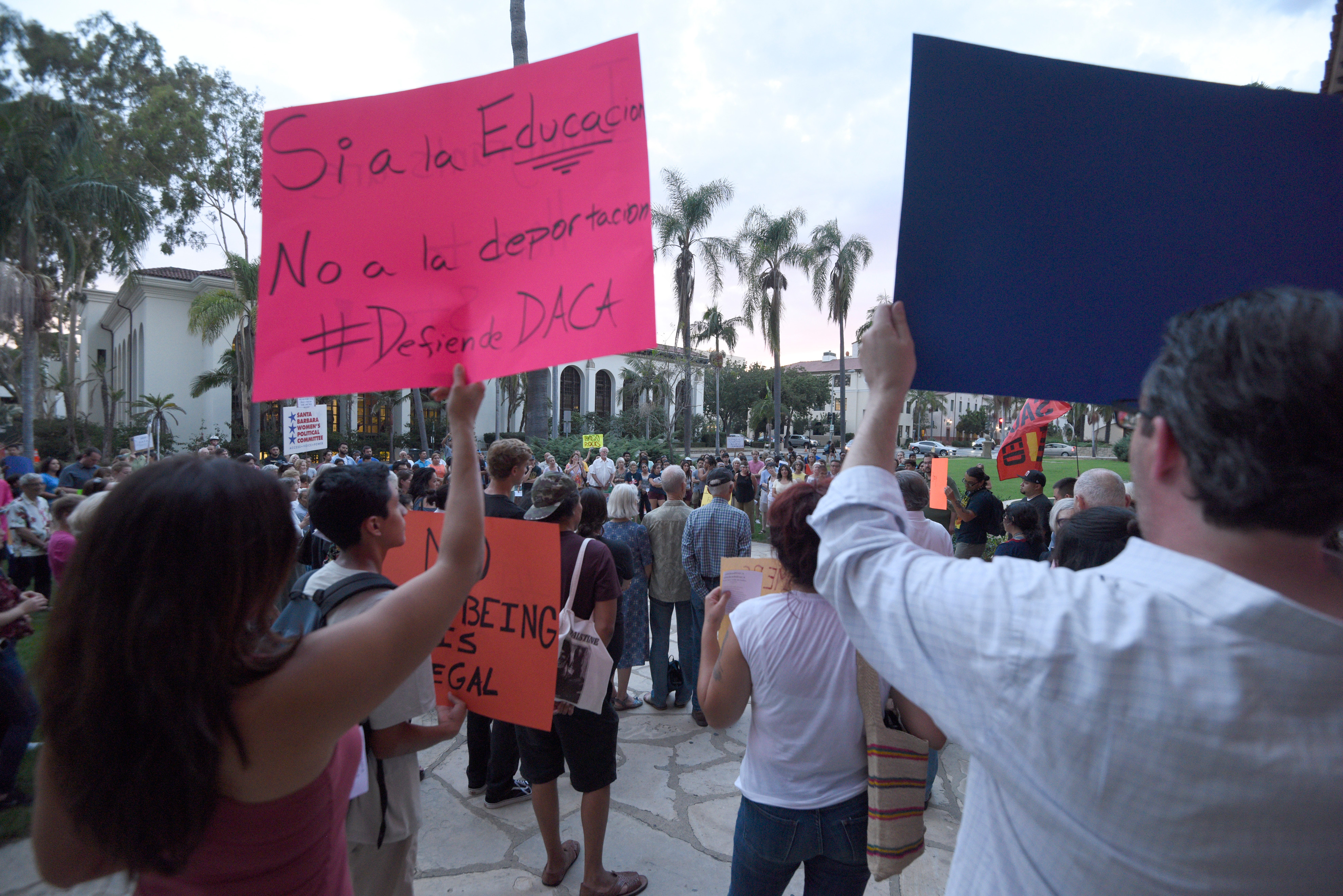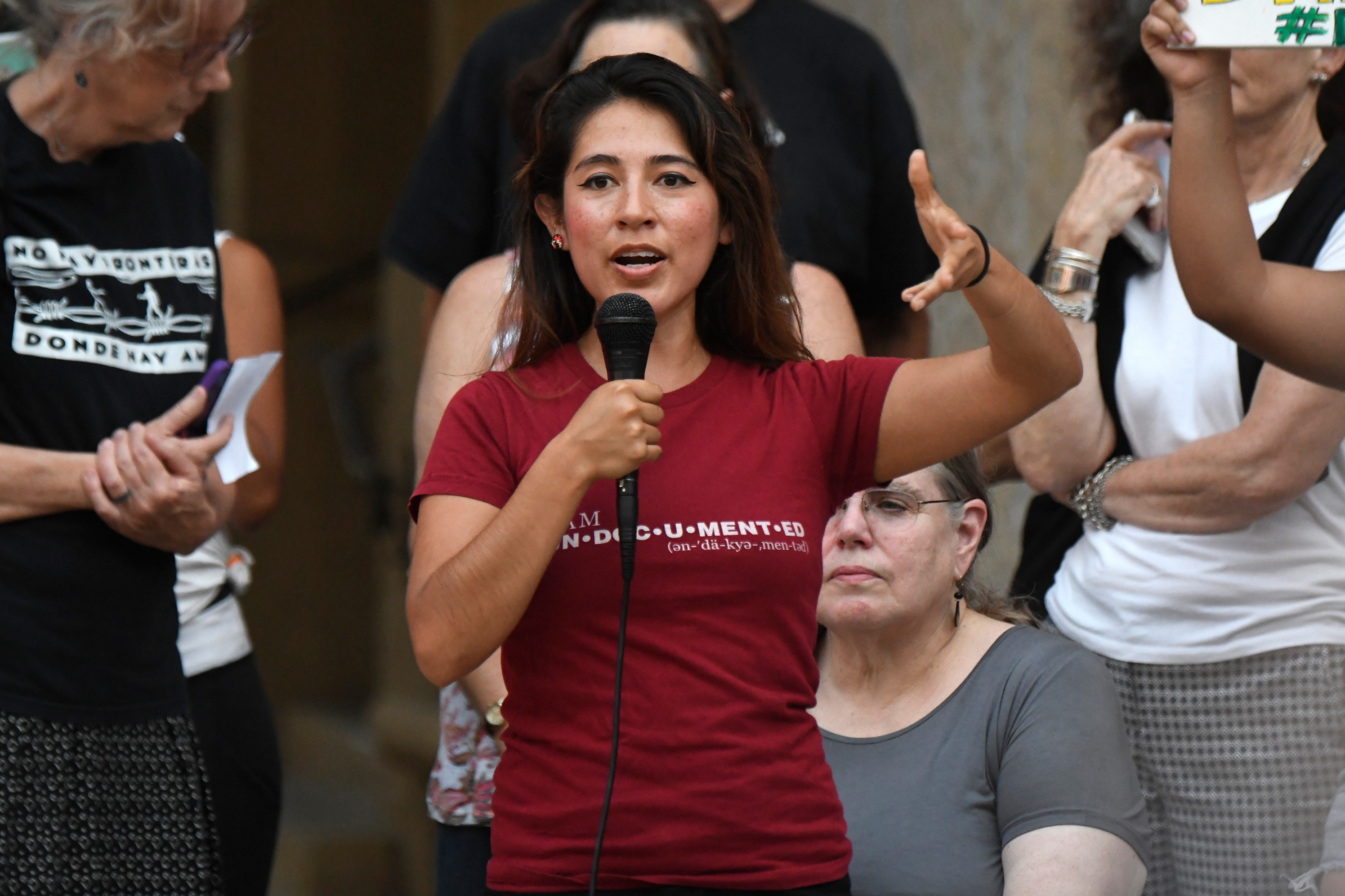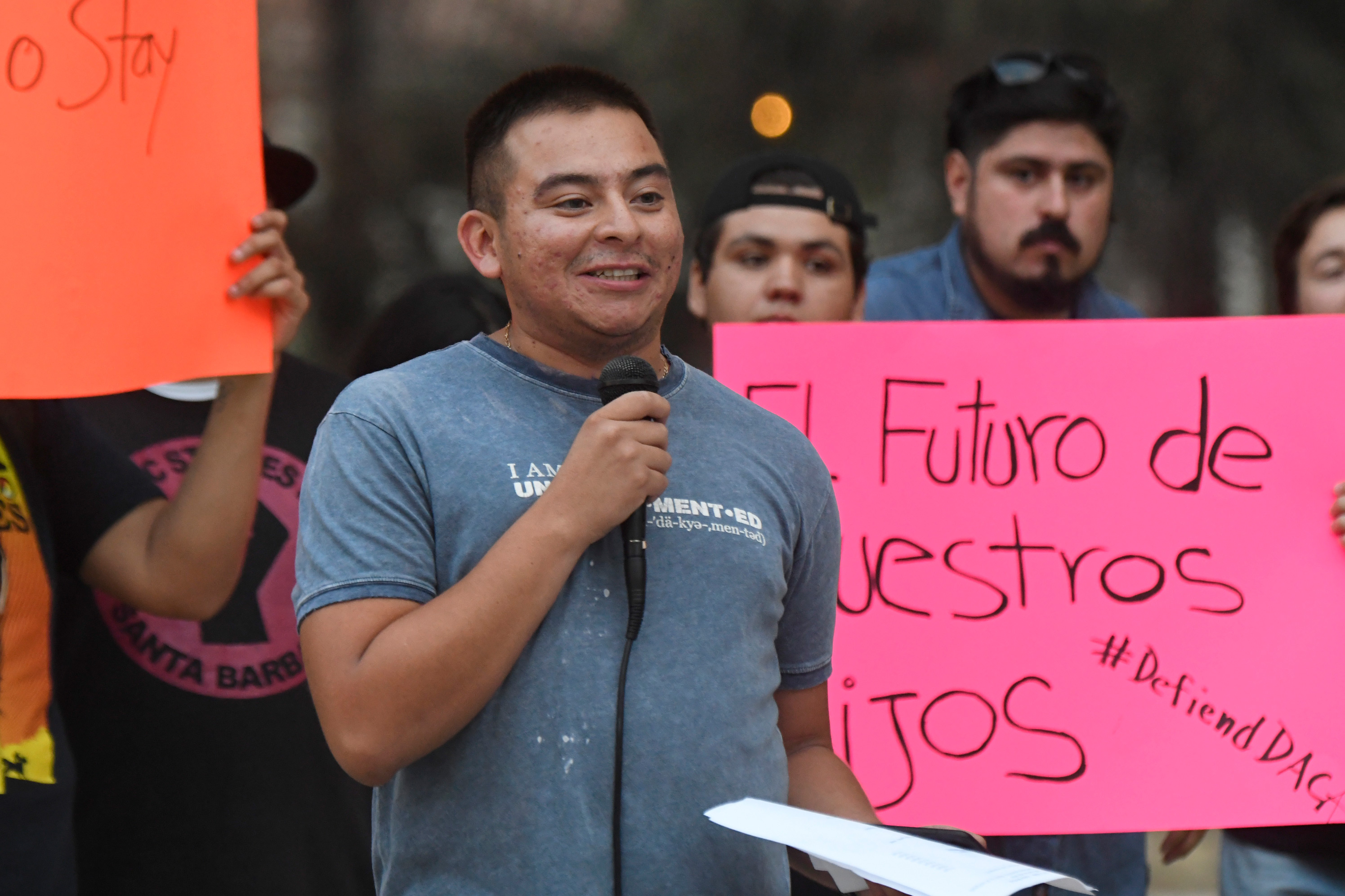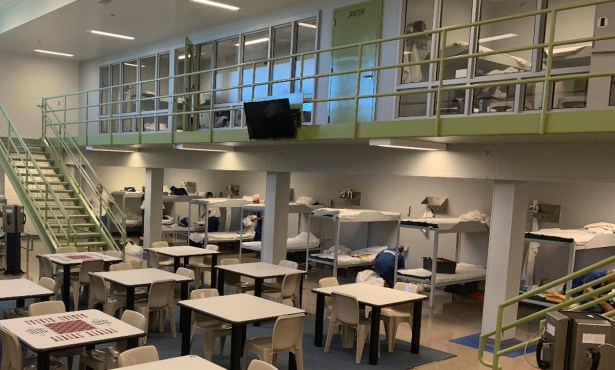Future Uncertain for Santa Barbara Dreamers
Trump's DACA Decision Affects 4,800 County Residents

Twenty-nine years ago, Lupe was born in Metepec, Mexico, with cerebral palsy. At age 8, she was brought to Santa Maria by her parents, who moved to the agricultural community to work in the fields. At age 25, she enrolled in DACA, formally known as Deferred Action for Childhood Arrivals, and received health insurance through her employer. She had not been to the doctor in four years.
When the Trump administration announced this week that it would phase out DACA, Lupe (not her real name) grew worried. She cannot go back to Mexico. Her life is here.
Lupe is just one of about 4,800 DACA recipients in Santa Barbara County whose lives were turned upside down by the announcement made by U.S. Attorney General Jeff Sessions. The federal program, enacted by President Barack Obama in 2012, gave certain undocumented young people temporary permits to work in the United States.
On Tuesday, the Department of Homeland Security updated its website. One line in bright red ran across the top of the page: “DACA Has Changed!”
In the months leading up to the announcement, President Donald Trump made what appeared to be contradictory statements about the program. On the campaign trail, he pledged to “immediately terminate” DACA. But at a news conference in February, Trump said, “We are going to deal with DACA with heart.”
Trump himself did not personally deliver Tuesday’s announcement. “It was kind of cowardly for Trump not to say anything himself and to send Sessions to deliver this,” Lupe said.

Despite her medical condition, Lupe has been able to work as a caregiver and at a telephone service company. “I think we work hard and we are not taking anyone’s jobs,” she said of her fellow DACA recipients. She is worried about the possibility of having to go back to Mexico. “One of the great things with DACA was that I was finally able to go to a doctor,” she said.
Next semester, she is going back to school at Allan Hancock College to obtain an associate degree in human services. She hopes to start a nonprofit to help people with disabilities apply for jobs, as she put it, “So [employers] can see beyond the disability.”
“Dreamers are dreamers because they have higher education,” said Holly Cooper, referring to the DREAM (Development, Relief, and Education for Alien Minors) Act. Cooper, a law professor at UC Davis who advises the Santa Barbara County Public Defender’s Office on immigration issues, said, “The doctor I have been visiting for two years is a DACA recipient. That impacts my health.”
Santa Barbara County officials and DACA participants reacted with anger and disappointment at the Trump administration’s decision. Jonathan Wang, who has been a leader in raising scholarship money for undocumented Santa Barbara students, also emphasized that many of these students have become engineers, attorneys, doctors, and professionals. “It is social warfare at its worst,” he said. “To be pulled out of the shadows and then pushed back.”
Under Trump’s order, existing DACA permits will remain intact for their full period. DACA participants whose permits expire between now and March 5, 2018, can file to renew their permits by next month. It is unclear if those renewals will be granted.
DACA recipient Rene Garcia Hernandez, 25, described the program like a coat that has protected him from immigration authorities. “It has been stripped away,” he said. Garcia Hernandez came to Santa Barbara when he was just a one-year-old. He grew up living in one bedroom in an Eastside apartment with his mother and sister. Now he works at Santa Barbara Unified School District to provide parent and student support. “Santa Barbara Unified is home,” he said. “Santa Barbara is home.”
“There are a lot of us still who are in the shadows who haven’t touched that nice coat,” he said. “They do live in fear, and that is sad. I am still scared, but I am living in community where we will not live in fear.”In his announcement, Sessions said the program would be phased out over the next six months unless Congress passes legislation to create a program that offers similar benefits for the Dreamers.
Historically, Congress has failed repeatedly to come up with a comprehensive immigration plan. Republicans and Trump himself, however, said Obama exceeded his executive powers in issuing DACA in the first place. Dale Francisco, former chair of the Santa Barbara County Republican Central Committee, said, “I don’t see why there wouldn’t be bipartisan support for some kind of reasonable solution. If you could make a case for any illegal immigrant, these are the people.”
Consensus does not exist among Republicans about what to do about Trump’s action. After all, there are 800,000 DACA recipients nationwide. More than a quarter live in California.
At Santa Barbara City College, nearly 500 students are enrolled as AB 540 students, who must have attended a California high school for three years and graduated or obtained a GED to attend college. The California DREAM Act allows them to apply for state financial aid. “In California, we don’t put dreams — or Dreamers — on hold. The California Community Colleges remain committed to serving all students, regardless of immigration status and to providing safe and welcoming environments in which to learn,” City College president Anthony Beebe said in a statement Tuesday. “[W]e are united in support of you and that together, we will get through this.” In addition, Beebe pledged not to allow immigration authorities on campus and not to share student records without a court order.

The California Community College System Chancellor Eloy Ortiz Oakley said that state financial aid for undocumented students is not in jeopardy.
California Attorney General Xavier Becerra, who is the son of immigrants, is preparing to sue the administration over the decision, according to a statement issued Tuesday. “Nearly 80 percent of voters want to protect the legal status of Dreamers,” he said. “Ending the program is devastating not just for recipients, but for our economy. California businesses would lose more than a billion dollars in turnover costs.”
UC Santa Barbara Chancellor Henry Yang expressed in a statement “deep concern” for students affected by the decision. He said he has personally spoken to many DACA recipients who have already demonstrated their commitment to academic excellence and to becoming American citizens. “We stand by our students and pledge our continued and unwavering support,” he said. A UCSB spokesperson said the school does not track the number of DACA recipients.
Congressmember Salud Carbajal participated in a September 1 rally at the Santa Barbara Courthouse, where more than 200 impassioned protestors showed up in the evening to denounce Trump’s looming decision. Carrying signs such as “I am a Dreamer,” protesters chanted, read poems, and shared stories.
Valeria Suarez Gonzalez recently wrote a letter to Carbajal, urging him to work with his colleagues to create a program in the short, six-month window. A recent graduate of UCLA and a Santa Maria resident, Gonzalez intends to go to medical school. “Now I’m not sure if I should even apply,” the 22-year-old wrote. “I’m not sure if these programs will be willing to accept us after DACA is gone and if the few financial aid options we had will still be there. But more importantly, I don’t know if I will be here.”
Gonzalez moved to Santa Maria from Michoacán, Mexico, when she was 6 years old. Her mom works at Rancho Harvest, and her dad has had jobs in construction. In college, she studied abroad in Mexico City and traveled to visit distant relatives. “It was nice,” she said. “But I’d rather stay here.” Still, she is determined to go to med school. “If I have to go, I’ll do it over there.”
Though Dale Francisco acknowledged Congress’s track record has been “horrible,” he expressed optimism that federal legislation would be successful. But if Congress cannot solve the problem in six months? “That would be a tragedy,” he said.



